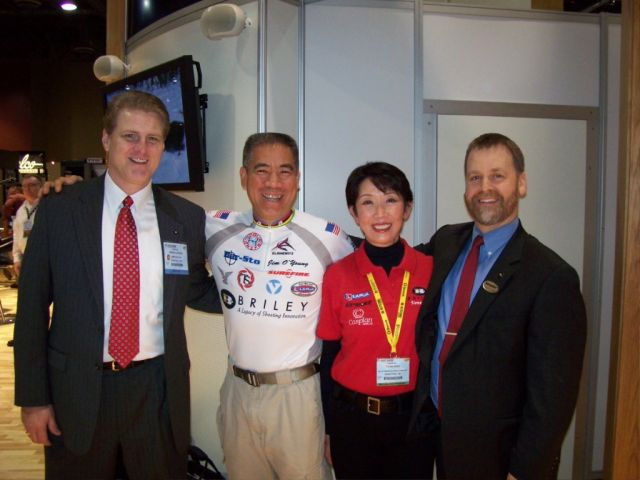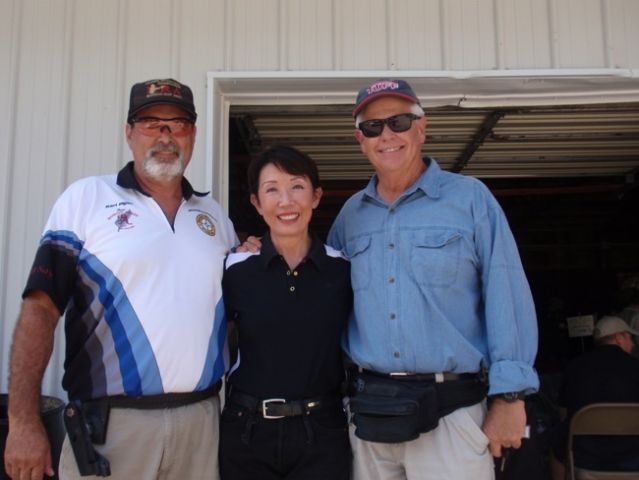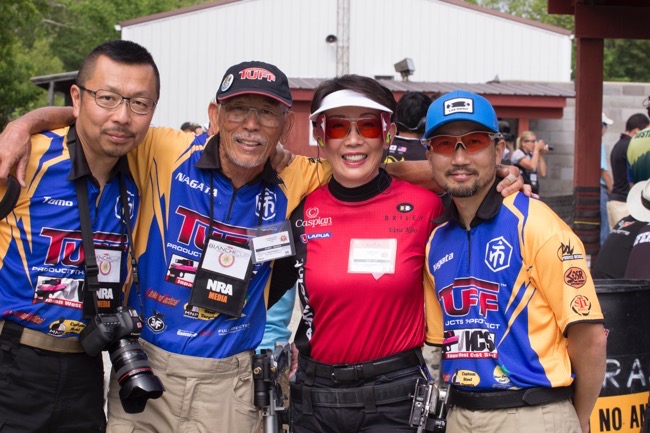Some people only find enjoyment in hobbies they can share with others, but I have never found this to be the case with shooting. Since I began sport shooting in my 40s, I have found it to be a rewarding individual sport.
I feel at peace when I am alone on the gun range.
Sure, you compete against other shooters, and you often see other shooters while practicing on the gun range.
You are not alone in a vacuum. At some events, you even compete on a team. At its core, however, sport shooting is just you, your gun and the targets.
Sponsored by Vera Koo
I like that. Shooting, for me, is not some frivolous hobby where I gather with friends and gossip on the range. It is an endeavor I pour myself into and challenge my body and mind.
Throughout my life, though, I have found that everyone needs help sometimes, even in the most individualistic endeavors. Shooting is no different, and I have been blessed with many great friends and mentors who helped me advance my career to where it is today.
You see farther standing on the shoulders of a giant, and I needed to find giants within the sport to be my mentors.
When I started competitive shooting, I knew almost nothing about the sport.

Brian Lisankie of Aimpoint , Jim O’Young , Vera Koo, Lennart Ljungfelt of Aimpoint
Jim O’Young became my first mentor, and he remains a good friend and teacher to this day. It was like fate brought us together.
Jim is a shooting giant within Steel Challenge, a discipline that combines speed, athleticism and accuracy.
I had completed some gun training courses but was a no-name in the shooting sport when I met Jim in 1991. I had recently decided to start competing in sport shooting, but I needed direction. I had bought a competition gun but was not happy with how I was performing with it.
I spoke with my local gun range owner about my problem, and he recommended that I talk to Jim, who came to the range every Thursday. Jim would know what to do, the range owner said.
That day was a Wednesday, so Jim was not set to come by my local gun range until the following day. But just as I was about to leave, I turned around, and there he was.
I told Jim about the issues I was having with my gun. Jim is a frank man. After hearing my story, he leveled with me and asked, “Is it the shooter or the gun?”
The next day, I met with Jim at the range and fired 2 magazines with the gun. I felt confident, even with an accomplished shooter like Jim watching me. Afterward, Jim fired the gun, too. He decided the problem was not with the shooter. He said he would help me get a new gun.
I knew I needed to take this further. I needed more than good equipment. I needed a mentor, and I thought Jim would be perfect. He is the consummate professional.
There was just one problem. Jim told me he did not take on students.
But I don’t easily take no for an answer, so I continued to work on him and asked if I could at least observe the way he practiced. He gave in, and I began meeting Jim at the range to watch him go about his craft. Eventually, Jim asked me to bring my gun and shoot, too. Soon, he became my teacher and mentor. He instructed me. He kept me informed about workshops in the area that I should attend. He pointed me toward competitions I should shoot in. He even shot with me as a teammate in some events.
He also became my friend.
Sometimes our friends can offer a helpful word or thoughtful act at just the right time, perhaps without even knowing the full value of what they are doing.
I have found this to be true on a number of occasions, including a few years ago when I was recovering from my spiral leg fracture I suffered while practicing for the Bianchi Cup at the gun range near Columbia, Missouri. (Read about Vera’s unfortunate experience here.)
Two months after my injury, Jim visited me at my home in California. He knew I was getting antsy in my recovery and that it killed me not to be able to practice. I wanted to compete at the Bianchi Cup the following May, and I was going stir crazy early in my recovery. To ease my mind, Jim helped my husband Carlos set up a small air pistol range in our backyard. It was not the same as practicing in Columbia, but it kept me engaged in the sport.
Jim always knew how to challenge me. During his time mentoring me, if I ever complained, he would ask, “Do you want to quit, or do you want to keep going?” I never quit. That is not in my DNA.
Although Jim has been my longest-standing mentor, there have been countless others – whether it be other shooters, gunsmiths or range masters – who have in their own way helped my journey in this sport.
I did not at first shoot in the Bianchi Cup when I began competing in shooting, but after deciding Bianchi would best suit my strength of accuracy, I contacted John Pride, a former Bianchi champion living in Southern California. He told me about Mickey Fowler and his training ranch in Mariposa, California.

Karl Piper, Vera & Mickey Fowler
If Jim O’Young was the guy to speak to about Steel Challenge, Mickey Fowler, a 4-time Bianchi Cup champion, was that man for Bianchi. His ranch was set up to mimic all the Bianchi stages.
Like Jim, Mickey at first told me he was not taking on students. But, like I said, I do not easily take no for an answer, and in February 1997, I found myself driving to Mickey’s ranch to train for my first Bianchi Cup.
At Mickey’s ranch, I met fellow shooter Ichi Nagata. I spent a lot of time training solo at Mickey’s ranch. Often, I was the last to leave, locking the gate behind me when I left.
But I had help along the way. After proving my skill to Ichi, he agreed to work with me. Ichi and his boys taught me all there was to know about Bianchi Cup while we trained at Mickey’s ranch. Any advice he gave me I put to the test, keeping what worked for me and discarding what didn’t.

Tomo Hasegawa, Ichy Nagata, Vera Koo & Takumi Suzuki (Chris Topia photo)
Throughout my Bianchi career, Ichi always has been a valuable friend and mentor with whom I can exchange ideas.
It was Ichi who, after my first Bianchi Cup in 1997, recommended that I go to the awards banquet afterward. Such a banquet was not in my comfort zone, but he persuaded me to attend. At the banquet, I was named the top woman newcomer at that year’s Bianchi Cup, and I won a cash prize. I later thanked Ichi and bowed in a respectful gesture to him. Without him, I would not have been in position to win any award that day. The same can be said of Jim O’Young, Mickey Fowler and so many others who helped me and would continue to throughout my career.
When I started this sport, I was told that although all shooters are competitive, we are also a community, and it is important that we help each other. This is so true. The grueling nature of this sport builds a sort of camaraderie. We need to look out for one another, to help one another.
After all, we all need help sometimes, so how can you expect help in your time of need if you do not also help others in theirs?
I would never change the individual nature of shooting. I find strength in my solitude on the range. But I also would not trade the friends or advice I have gained along the way, nor would I be where I am without them.
I have learned that you will never get to a place worth reaching solely by your own effort. Everyone needs the help of others to reach where they want to go. That became clear on my journey through this sport.
Vera Koo is a first-generation Chinese American woman. She’s a wife and mother, author, entrepreneur and retired competition shooter. Along with two published books -- "The Most Unlikely Champion" and "Wisdom and Things: Essays From an Unlikely Champion" -- she writes her column, Vera Koo, at "Women’s Outdoor News." View all posts by Vera Koo